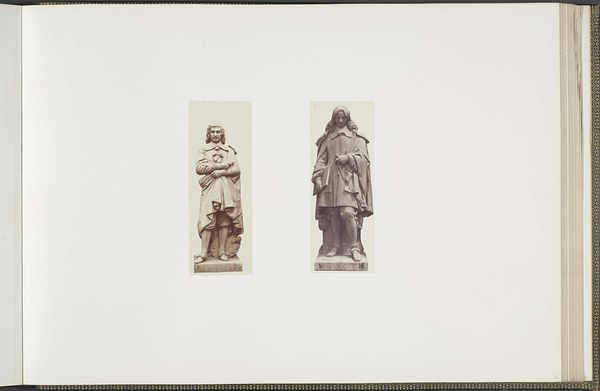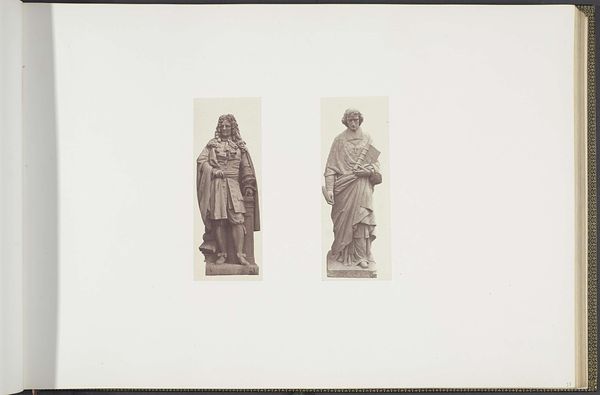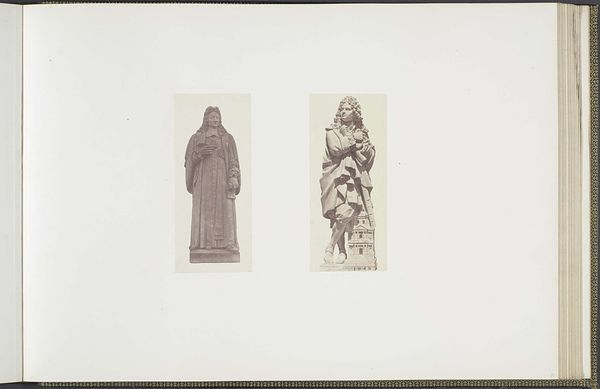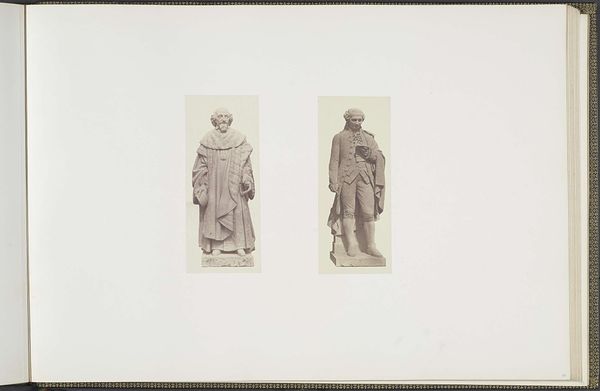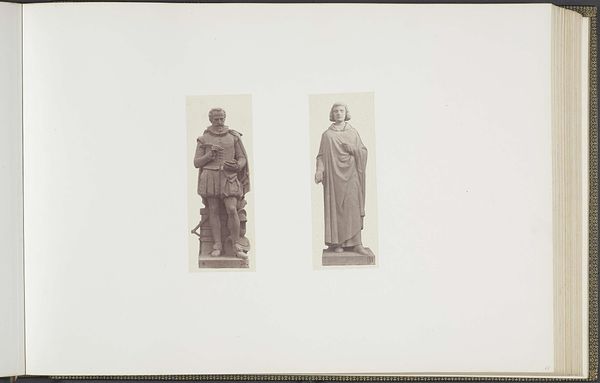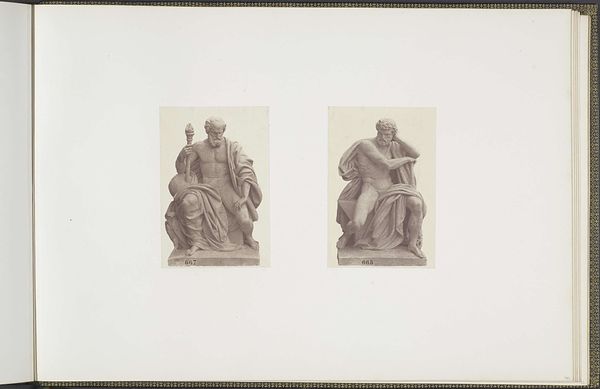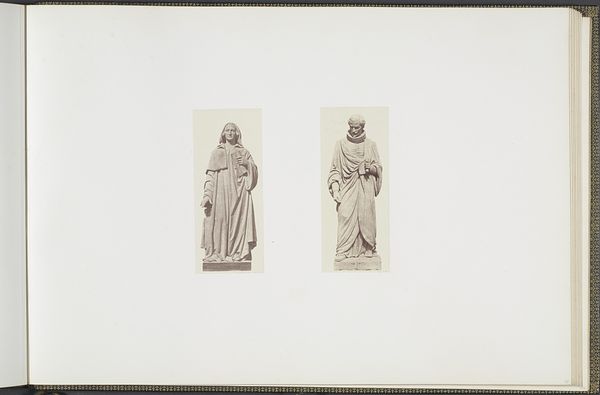
Gipsmodellen voor beeldhouwwerken op het Palais du Louvre: links "Voltaire" door Antoine Desboeufs en rechts "Bossuet" door Louis Desprez c. 1855 - 1857
print, photography, sculpture
portrait
photography
sculpture
Dimensions: height 378 mm, width 556 mm
Copyright: Rijks Museum: Open Domain
Curator: These facing images by Édouard Baldus capture plaster models destined for the Palais du Louvre, created around 1855 to 1857. On the left, we see Antoine Desboeufs’ depiction of Voltaire, and to the right, Louis Desprez’s Bossuet. What leaps out at you? Editor: A sense of profound separation. The way they are framed isolates them, two thinkers almost tragically alone, despite facing each other. The empty space hums. Curator: Indeed, there’s a beautiful, melancholic solitude to them. Both men represent powerful, albeit conflicting, voices of their time. Voltaire, the champion of reason, faces Bossuet, a staunch defender of divine right. These weren’t merely portraits; they embodied ideological positions. Editor: The contrapposto in Voltaire’s stance emphasizes this. He’s caught in motion, mid-stride perhaps, or caught with new thought - dynamic even in plaster. Whereas Bossuet feels intentionally still, monumental, self-contained in his certainty, that classical pose a marker of established authority. Curator: The use of photography to document sculpture introduces an interesting layer, wouldn't you say? Baldus immortalizes these ephemeral plaster figures, destined to be translated into something grander, permanent perhaps in stone. It's a study of process, an ode to transformation. Editor: Absolutely! Light seems to caress these figures, breathing transient life into these interim sculptures, when actually stone usually wants to emphasize endurance, the immutability of belief itself. I notice too how these gentlemen hold tomes—as objects the words within take a second place. They embody thinking by gesture as well as implication. Curator: Looking at them like this offers a glimpse into a moment of potent intellectual and aesthetic ambition, of these thinkers facing each other but forever divided by how they see and experience the world. They're reminders of enduring dialogue. Editor: A reminder that thought immortalized often reveals just how human, and contingent, our most deeply held convictions can be. A compelling mirror to our own quest for meaning, and it is good food for thought today.
Comments
No comments
Be the first to comment and join the conversation on the ultimate creative platform.
